
Poales, the grass order of flowering plants, has a worldwide distribution because of their abundance. Poales members are monocotsWhat is monocots?Angiosperm having only one cotyledon. Cotyledon is seed leaf; the first leaf (or set of leaves) to appear during the early development of a seedling. with two-ranked leaves, much-reduced flowers, dry and small stigma, and a well-developed style.
The Poales flowers are unisexual, bisexual, or sterile and pollination of the members is via anemophilyWhat is anemophily?Referring to flowers which are wind-pollinated; other type is entomophilous (insect-pollinated) or entomophilyWhat is entomophily?Pollination by insects. Contrast anemophilous (wind-pollination).. The famous bamboo and pineapple are found under Poales order.
Table of Contents
Poales Families
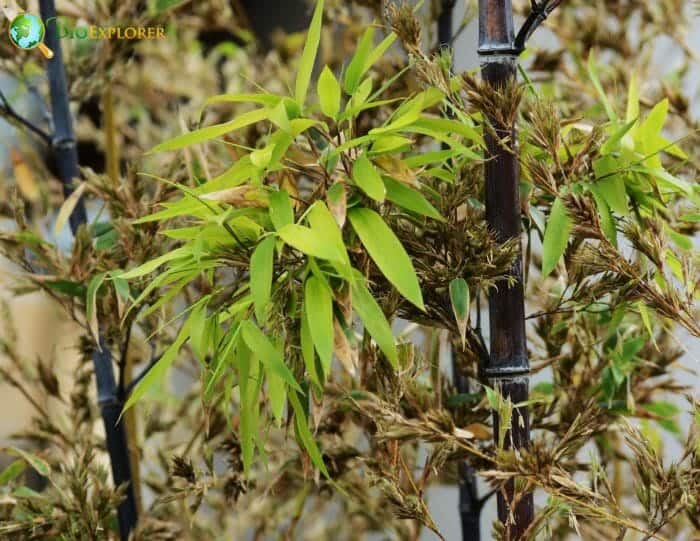
Poales comprises 14 families, 997 genera, and 18, 875 species[1]. This order also includes the families of sedges, rushes, and bromeliads. The order Poales comprises 7% of all angiosperms and 33% of the monocots[2], a significant percentage of the flora. The families under Poales are:
- Anarthriaceae
- Bromeliaceae (Bromeliad family)
- Cyperaceae (Sedge family)
- Ecdeiocoleaceae
- Eriocaulaceae (Pipewort family)
- Flagellariceae (Supplejack family)
- Joinvilleaceae
- Juncaceae (Rush family)
- Mayacaceae (Bog moss family).
- Poaceae (Grass family)
- Rapateaceae (Summertime Inírida flower).
- Restionaceae (Restios family)
- Thurniaceae (Palmiet family)
- Typhaceae (Cattail family)
- Xyridaceae (Feathered yellow-eye family).
The seven families (Poaceae, Ecdeicoleaceae, Flagellariaceae, Restionacea, Anarthriaceae, Centrolepidaceae, and Joinvilleaceae) are the groups with grass members.
Poales Distribution
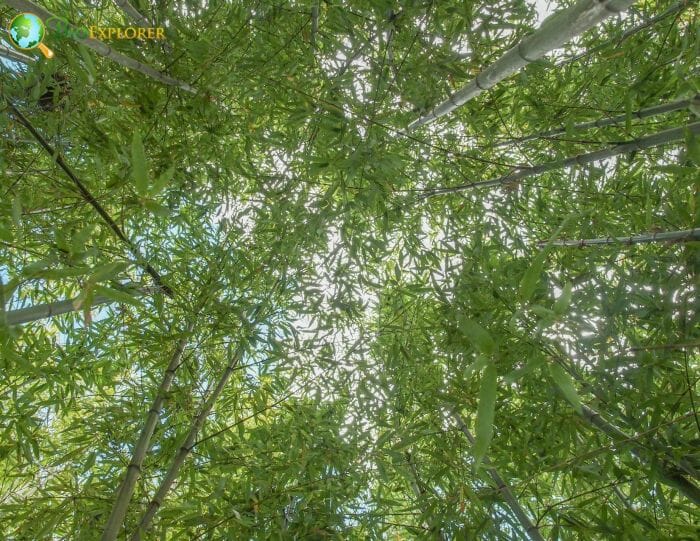
Grasses are very abundant plants on earth with a worldwide distribution. They are found in every type of habitat and are existent on every continent, including Antarctica.
The 3 genera of Anarthriaceae and 2 genera of Ecdeiocoleacea are limited in Southwestern Australia. Eriocauleceae members are dominant in South America. Some species (Eriocaulon) are also found in Japan, North America, and Europe (E. septangulare). Plants of Xyridaceae thrive in the tropics and subtropics of the Americas. The two families of the cattail group (Sparganiaceae and Typhaceae) are dominant in the Northern and Southern hemisphere’s temperate and cold regions. Bromeliaceae plants[3] are native to the New World’s tropics and subtropics. Species from this family are also distributed in the USA and Argentina. Rapataceae plants are also distributed in the Neotropics, except Mashalocephalus (endemic to West Africa).
Poales Characteristics
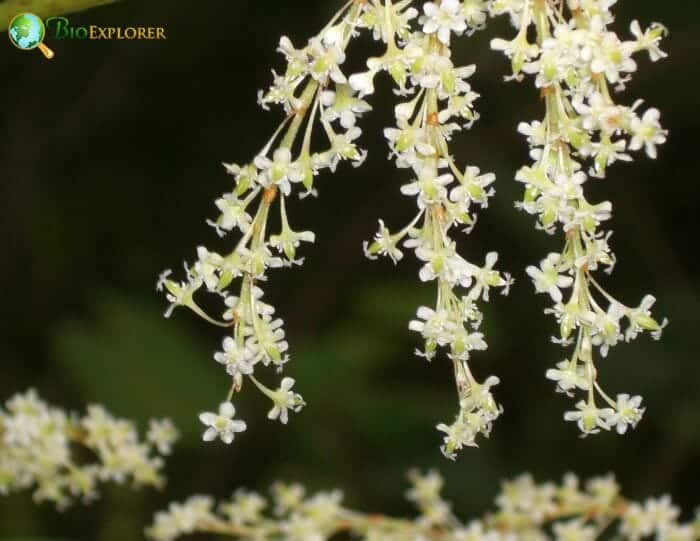
The plants of Poales share common characteristics.
- Plant type: Members are monocot flowering plants. The members are primarily herbs. They only have a single seed leaf.
- Roots: Vessel elements are present in the roots.
- Stem: The culms[4] (stem of the grass plant) have nodes and internodes. The nodes are “jointed” (swollen). Vessel elements are present in the roots, stem, and leaf. It often has simple perforation plates. The stems are commonly round and hollow. Other species are solid and triangular.
- Leaves: The leaves emerge at the nodes. They appear on two sides of the stem (two-ranked). The leaf is divided into a sheath and blade. The blades can be flat, conduplicate, or inrolled.
- Flowers and inflorescences: Flowers can be unisexual, bisexual, or sterile. They undergo whole nuclear genome duplication. The flowers are much reduced. Flowers are floret (flower with two bracts). The florets are arranged in spikelets. The spikelet has a stalk (pedicelWhat is pedicel?The stalk of an indidivual flower in an inflorescence or the stalk of a grass spikelet.).
- Sepals and petals: The noticeable perianth is absent.
- Stamens and carpels: The androecium usually have 3 stamens (occasionally 6). The carpels in the gynoecium are 2, sometimes 3.
- Ovary and fruit: Generally, the ovary is superior. The fruit is usually a caryopsis.
- Seeds: The seed is usually single per flower. Other species have 3 per flower.
Poales Flowers and Reproduction
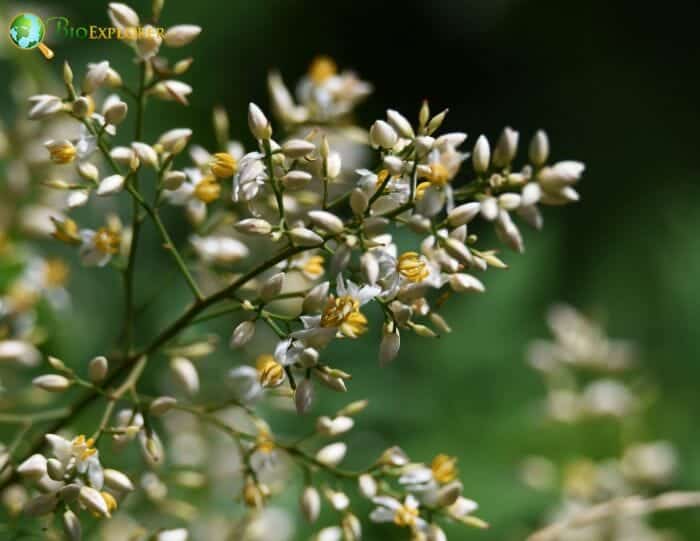
The inflorescence of the grasses is a grass spikelet[5]. Each spikelet is made up of two glumes and 1 or more florets. The flowers are neither showy nor aromatic. The flower’s reproductive parts are enclosed by the modified leaves (glumes, lemma, and palea). The ovary has 1-3 chambers. Each chamber has only one pendulous ovule. All grasses have 1-3 stamens, except Flagellariacea. This family has members with 6 stamens.
The cattail families (Sparganiaceae and Typhaceae) have a minute and unisexual flowers. Both are petalless. Flowers are on a compressed cylindrical spike. The female flowers are located below the male flowers.
The flowers of the sedges (Cyperaceae) and rushes (Juncaceae) families are usually small and green. The members have bisexual flowers, usually crowded into the terminal or lateral clusters. Eriocaulaceae and Xyridaceae also possess small flowers. However, these families have flowers with showy clusters. The flowers can be male or female.
The pineapple family, Bromeliaceae[6], has colorful flowers and foliage. Members are characterized by having flowers with three parts and colorful bracts. The flowers may exist at the midpoint of the rosette or can be an elongated spike, a panicle, or a raceme. The florets are made up of 3 petals and 3 sepals. These petals and sepals surround the stamens (6) and stigma (1). Most fruits are fleshy.
Researchers conducted a study on the Poales pollination in the Neotropics[7]. Wind pollination primarily occurs in Poaceae, Cyperaceae, and Jundacaea. However, insect pollination also happens to some degree. Anemophily occurs in Thurniaceae and Typhaceae. It is the process that transports pollen from one plant to another via air currents. The bees mostly pollinate the flowers of Xyridaceae. Diverse small insects visit the small-quantity nectar secreted by the flowers of Eriocaulaceae and pollinate them. Anemophily is also happening in Bromeliaceae. Although, pollination from diverse animal groups (mainly hummingbirds) also occurs.
Poales Family Differences
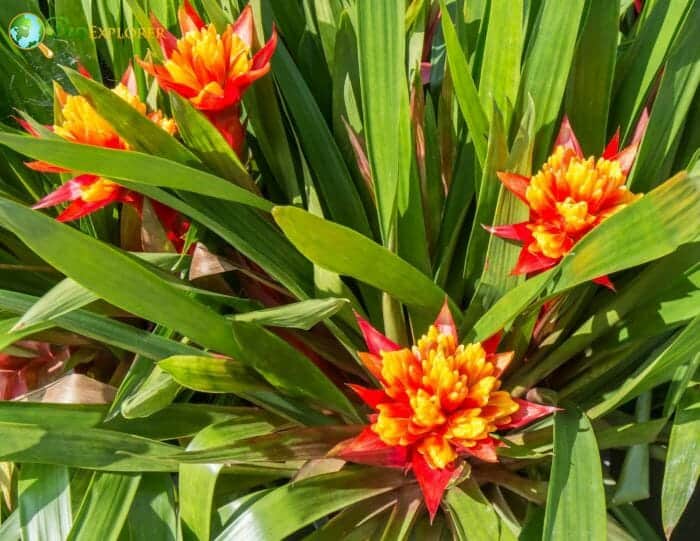
The families of sedges and rushes are often confused with the grasses because they appear grasslike. However, there are a few characteristics that differentiate the three.
Grass (Poaceae)
- Plants are common worldwide but most dominant in tropical and warm climates.
- The leaves are arranged in two ranks (distichousWhat is distichous?Two-ranked, with leaves or flowers in two opposite rows in the same plane.).
- The leaf sheaths are typically open.
- Grasses usually have hollow stems, except for the nodes. They are never triangular. They are round in cross-section.
- Most are bisexual. Although separate male and female flowers may exist on the same plant.
- The fruit is usually a caryopsis.
- Grasses produce a single seed per flower.
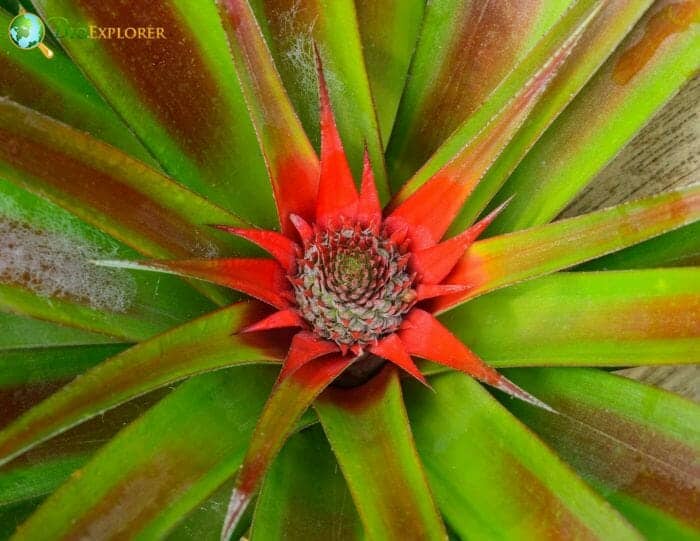
Sedges (Cyperaceae)
- Plants are also common worldwide, but they prefer colder regions.
- The leaves are arranged in three vertical rows (tristichous).
- The leaf sheaths are typically closed.
- The stems are usually solid and triangular (three-sided).
- Flowers are bisexual; others are unisexual.
- Fruits form beak-like clusters (1-inch long).
- Sedges produce a single seed per flower.
Rushes (Juncaceae)
- Plants thrive better in colder, wetter regions.
- The leaves are usually found at the stem’s base and are spirally arranged.
- The leaf sheaths are typically closed.
- The stems are, in general, circular in the cross-section.
- The flowers are typically bisexual.
- Fruits are tiny (less than 1/8 inch in diameter).
- The rushes produce three seeds per flower.
Poales Example Species
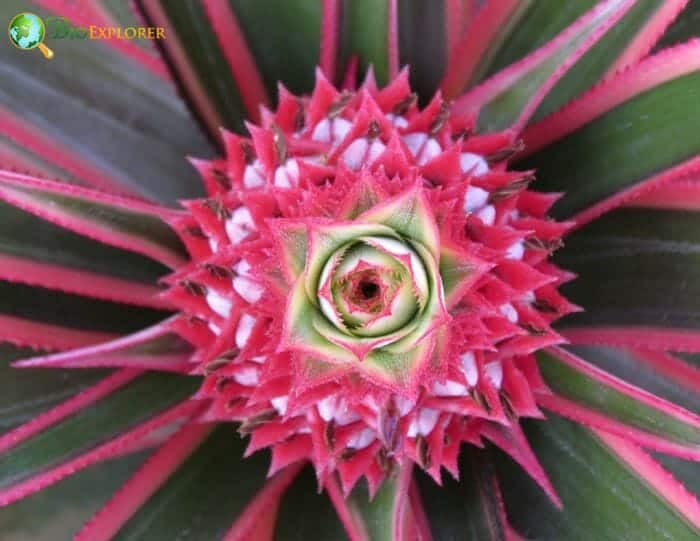
The members of the order Poales have many benefits. The species are used as ornamentals, food, and medicine. In addition, it is the most important orderof plants economically. Some example species are:
- Bamboo[8] – Bamboo has many uses like construction, furniture, food, biofuel, fabrics, cloth, paper, pulp, charcoal, and ornamental garden planting.
- Pineapple[9] – The fruit is edible. It is an essential source of vitamins and minerals.
- Purple Nutsedge[10] – The tubers are edible and nutritious. It is also used as traditional medicine.
- Yellow-eyed grass[11] – This plant is of ornamental value (garden plant and cut flower). It also has medicinal uses.
- Stream Bogmoss[12] – This species is used as an aquarium plant.
- Horsetail Restio[13] is an attractive plant perfect for extensive gardens and ponds or water feature edges.
- Palmiet[14] – The leaves of this plant are used for making baskets, hats, and mats. The young flower shoots are edible. Ecologically, this plant prevents erosion in the river bed and river banks.
- Copper’s Reed – The plant is a source of food and medicine.
- Dwarf pipewort
- Joinvillea plicata

























